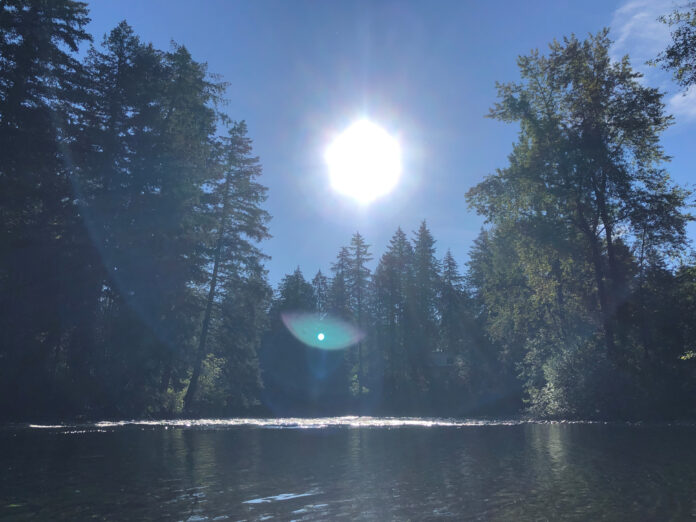Despite the turn in weather over the last couple of weeks, more rain is needed to get salmon spawning in some rivers.
According to BC Hydro spokesperson Steven Watson, the areas around the Puntledge and Quinsam rivers have received around 100 millimetres of rain in the last week. Watson says this sounds good, but the reality is that it is so dry the rivers still need more water.
“We’ve seen really very little inflows into our systems, particularly the Quinsam River system and upper Quinsam Lake,” said Watson. “River flows at Puntledge may come up one or two cubic metres per second.”
Watson says they are still pumping water from the Upper Quinsam Lake down the Quinsam river system throughout the week and they might re-evaluate with a potential storm coming on Thursday.
He adds for Campbell River, they need about an 80 m3/s flow rate to keep the river bed covered, but they have been running at 65 m3/s.
With the dry weather, the salmon spawning season has been delayed, according to Watershed Watch wild salmon campaigner David Mills.
“Here in the Comox Valley we can look to some local streams, for example, Washer Creek (Hart Creek) in Union Bay is still completely dry,” said Mills. “There are pools where last year’s coho are still surviving, but there’s no flow through the creek.”
He adds the going has been tough for the fish that have flow, with warmer temperatures decreasing oxygen and lower water levels creating more obstacles.
The fish might be seeing higher predation, lower food supply and decreased energy. Mills adds other fish are facing the crunch.
“There are species like coho that stay in our creeks and streams for an entire year after they hatch,” he said. “So, all those fish that were over summering in streams that were rapidly losing their water, and we didn’t get any rain for three months, we could have lost a lot of the fry and smolts that live in the stream all year.”
Mills adds with salmon being a keystone species, the complications could be larger. With lower chum returns, Mills says there is a loss of food for marine mammals and other creatures.
“It’s a big blow, and coming on the heels of last year’s record floods, we’re really seeing the impacts of climate change in real time,” said Mills.
Watson says after the potential storm on Thursday, the weather is supposed to get colder. While Mills says the cooler temperatures are better for salmon in the water, Watson says this can be not as good for water inflows.
Mills says steps from the province, like fish protection orders to close fishing, and steps from local citizens to get involved and drop our carbon footprint can help in the long run.
“It’s not just governments who make all of the decisions. We all can make decisions in our own lives to make it easier for fish,” said Mills.






